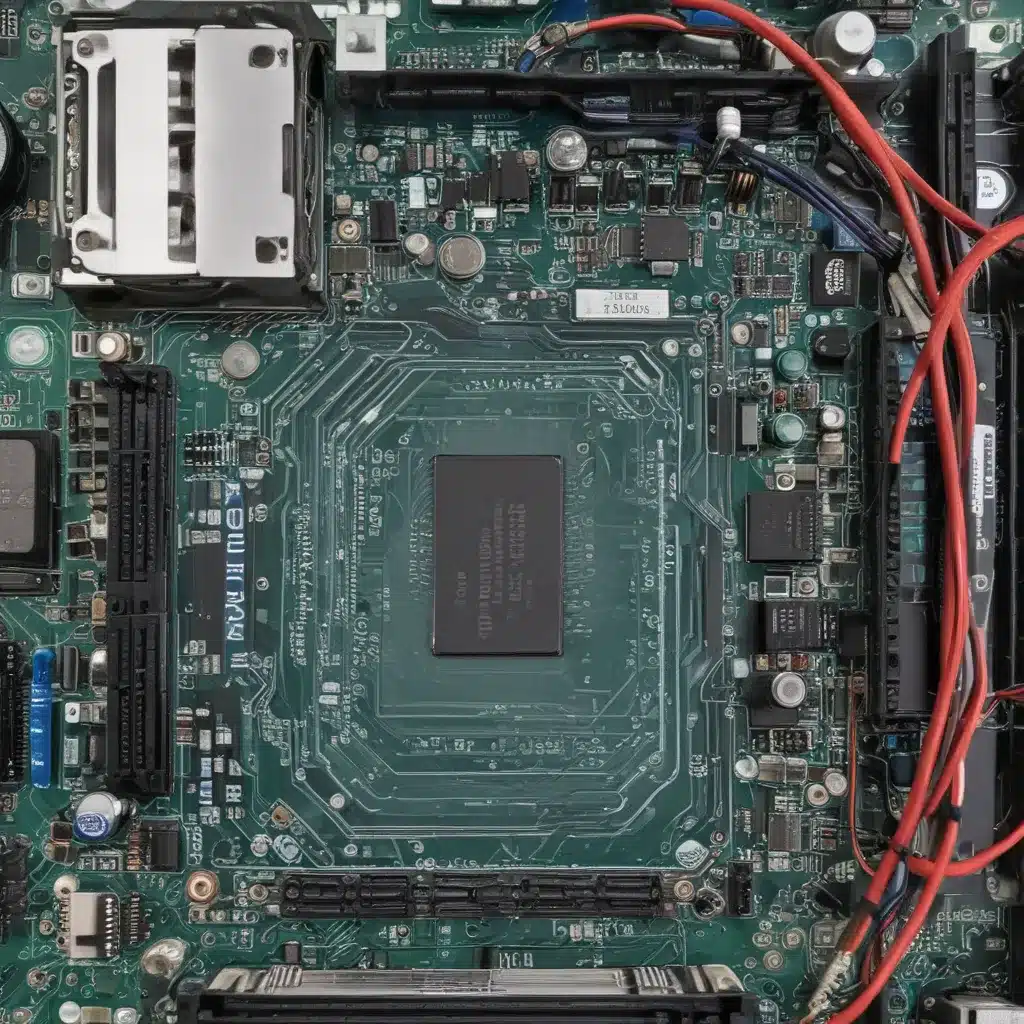Unveiling the Cacophony: Taming Noisy Computer Parts
As a self-proclaimed tech enthusiast, I’ve experienced my fair share of noisy computer components. The whirring fans, the rattling hard drives, and the grinding coils – it can be enough to drive anyone mad! But fear not, my fellow tech-savvy friends, for I’m here to share my hard-won wisdom on how to silence those deafening devices and restore the tranquility to your digital domain.
Diagnosis: Identifying the Culprit
The first step in tackling a noisy computer is to pinpoint the source of the problem. Is it the CPU fan spinning at a frantic pace, the graphics card struggling to keep up, or perhaps a faulty power supply unit making its presence known? Fear not, my inquisitive companions, for I have the tools and techniques to help you diagnose the issue. [1]
By opening up your trusty machine and conducting a thorough inspection, you can quickly identify the offending component. Listen intently, observe closely, and use your senses to guide you. Is that fan blade wobbling erratically? Is the hard drive emitting a concerning click-clack symphony? These are the telltale signs that will lead you to the source of the racket.
Silencing the Screamers: Cooling Conundrums
Now that you’ve pinpointed the culprit, it’s time to put on your problem-solving hat and devise a plan of attack. Let’s start with the ever-present issue of overheating. When a component is working overtime, it generates an excess of heat, leading to those high-pitched whirs and groans. [2]
The solution, my friends, lies in the realm of cooling. Consider upgrading to a more efficient heatsink or liquid cooling system. These advanced cooling solutions not only reduce the noise but also ensure your components operate at optimal temperatures, prolonging their lifespan. And for those of you with a penchant for DIY, why not explore the wonders of custom cooling setups? The internet is a veritable treasure trove of tutorials and inspiration.
Taming the Turbulence: Fan Finesse
But what if the fans themselves are the source of the commotion? Fear not, for there are ways to tame these turbulent turbines. [3] One simple trick is to adjust the fan speed settings within your computer’s BIOS or dedicated software. By dialing down the revolutions per minute (RPM), you can effectively lower the noise level without compromising performance.
Alternatively, you could consider replacing those noisy stock fans with quieter alternatives. From silent case fans to whisper-quiet CPU coolers, the market is brimming with options that will transform your computer from a jet engine to a serene symphony. And don’t forget about fan controllers – these nifty devices allow you to fine-tune the speed and performance of your fans, putting the power of silence in your hands.
Silencing the Spinners: Taming Troublesome Drives
But the noise doesn’t stop there, my friends. Hard drives and optical drives can also contribute to the cacophony within your computer’s chassis. [4] These whirring, clicking devices can be a real nuisance, especially during intense data transfers or media playback.
The solution? Swap out those old, clunky drives for solid-state alternatives. Solid-state drives (SSDs) not only offer lightning-fast performance but also operate in near silence, eliminating the mechanical whirring that plagues traditional hard disk drives (HDDs). And if you simply can’t part with your trusty HDD, consider investing in a solid-state cache drive to offload the noisier tasks.
Quieting the Coils: Taming Power Supply Purrs
Ah, the power supply unit – the unsung hero of the computer world. But even these vital components can fall victim to the curse of noise. [5] Whether it’s the high-pitched whine of the internal fan or the rumbling of the coils, a noisy PSU can be a real headache.
The solution lies in selecting a high-quality, efficient power supply. Look for models with 80 Plus certification, which indicates superior power efficiency and reduced heat generation. Additionally, consider investing in a modular power supply, where you can neatly tuck away unused cables, minimizing the potential for interference and unwanted vibrations.
Conclusion: Embrace the Silence
By following these steps, my friends, you’ll be well on your way to transforming your computer from a cacophonous cacophony to a tranquil temple of digital serenity. Remember, the key to a quiet computer lies in a combination of strategic upgrades, thoughtful adjustments, and a keen eye for detail. [6]
So, embrace the silence, my fellow tech enthusiasts, and bask in the serene bliss of a whisper-quiet machine. Your ears (and your sanity) will thank you.
[1] https://h30434.www3.hp.com/t5/Desktops-Archive-Read-Only/HP-TouchSmart-300-1120-not-booting-up-and-with-noisy-fan/td-p/4522598
[2] https://michael.stapelberg.ch/posts/2021-08-28-silent-hp-z440-workstation/
[3] https://www.reddit.com/r/GamingLaptops/comments/vphxz0/guide_how_to_properly_limit_cpu_boost_clock_to/
[4] https://us.norton.com/blog/how-to/why-is-my-computer-fan-so-loud
[5] https://www.pcmag.com/how-to/fix-a-noisy-computer-fan
[6] https://www.avg.com/en/signal/fix-loud-computer-fan













